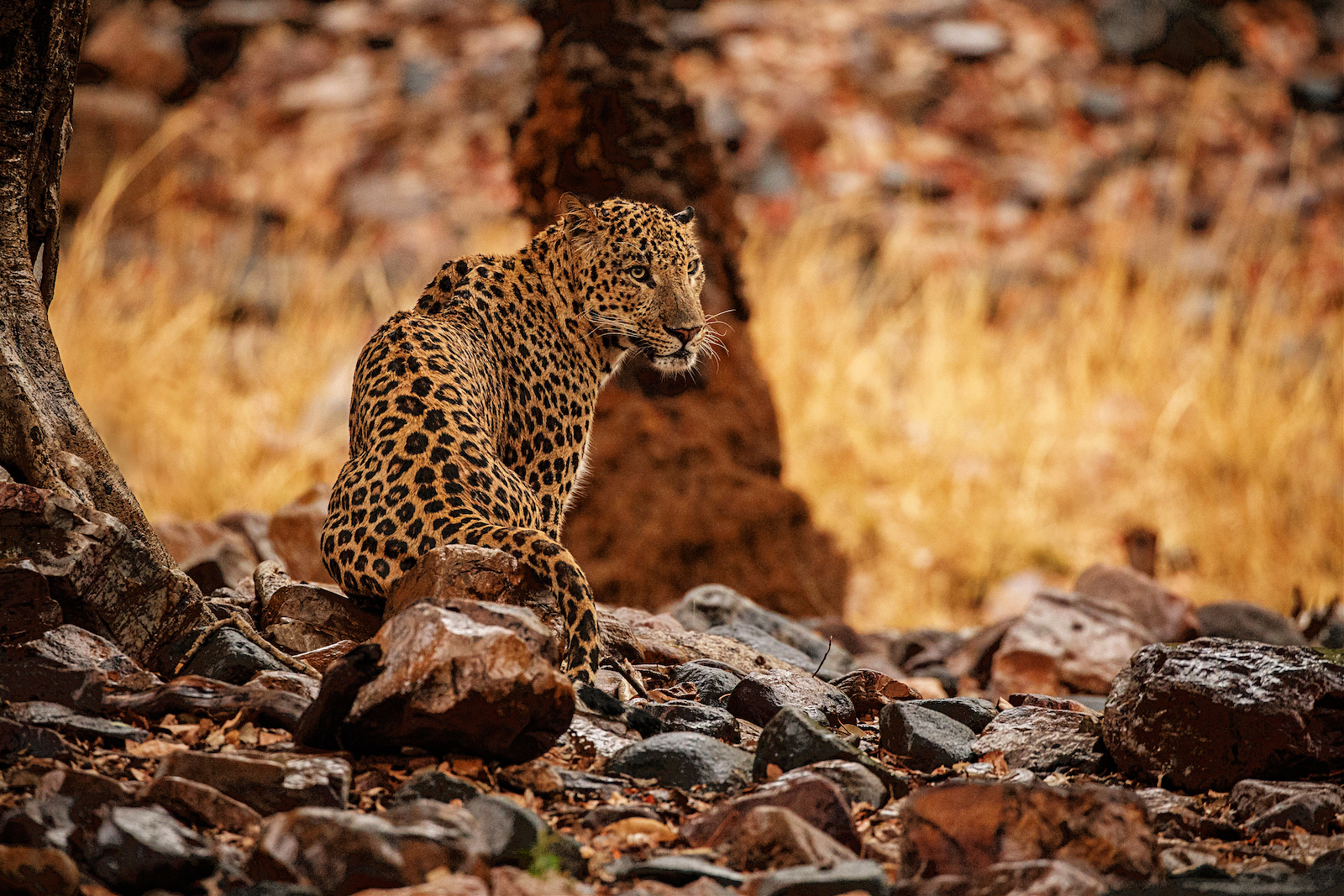
The Empty Playgrounds in Chandrapur
Nilima’s young face is petrified. Her eyes are dark, empty, and utterly void of life. Although our gazes meet, there is no eye contact. She is dressed up for our visit, but her brightly colored sari grays in the somber atmosphere. The sadness is heartbreaking. I feel a lump growing in my throat, and even though the temperature is well above eighty-six degrees Fahrenheit, the cramped room feels filled with a cold and intrusive fog of despair.
We are in a small house in the town of Chandrapur in central India. Just three and a half days earlier, Nilima Bopche’s husband – Purushottam Bopche – was on his way home from his job as a security guard at the local steel plant. Darkness had fallen, but he still stopped his car on the side of the road to pick some herbs from the forest floor. The road between the steel plant and the house is only a few kilometers long and is within the city limits. But in Chandrapur, nature is always close by. The people follow age-old traditions of picking herbs and leaves for household use when they are in season. Purushottam did the same that night; no one ever saw him alive again.
They quickly found the car on the side of the road when he didn’t come home as expected, and soon after, they found the remains of Purushottam’s body. He had been attacked and killed by a stray tiger and dragged 150 meters into the forest. However, his body was relatively intact when found – it is common for tigers to wait a while before eating their prey.
What happened in Purushottam’s final moments of life, no one knows for sure. Was it quick? Did he struggle? Did he realize his short life was over? The raw truth is that wild animals are indifferent to the suffering of their prey. Nature is relentless. So is the absolute king of the jungle – the Bengal tiger, a 250-300 kg top-tuned predator with razor-sharp claws and finger-long canines. By nature, the giant cat is evolved to take down an Indian wild ox – a gaur – with a body weight of around one ton. A human is an easy prey. Incredibly few humans, therefore, survive a tiger attack. The few that make it out of the forest alive after an attack typically dies within a few days in the hospital from septic shock from bacterial infections of the deep wounds that people get when attacked by a tiger.

Purushottam was the sole breadwinner of the household. He supported his young wife, her sister, her two children, and his old and diabetic father. So, on top of the tragedy of losing the love of her life, the future looks bleak on a purely practical level for Nilima and her family. She will soon receive 2 million rupees from the government as compensation for the loss of her husband. This amount equals around $24,000 thousand or 6-7 years of salary for a security guard.
The compensation may sound reasonable, but in a country with little work available for women with Nilima’s educational background (or lack thereof), the money does not go far, considering her young age. Moreover, when the funds are paid out, there will be many hungry eyes on the money, many hands outstretched, and many people demanding their share.
So, it is not just a case of a young life lost. It is also an existential challenge for an entire family. The same is inherent in many similar cases that increasingly affect the poorer sections of India’s population.
A conflict with many victims
According to Mathen ‘Rajeev’ Mathew, an Indian wildlife biologist, and wildlife consultant, who works on human-wildlife conflicts, there are no official statistics on the number of animal fatalities in India.
So, over the past few years, Mathew has launched his own investigation by having his network across India monitor local media and report incidents to him. Mathew’s numbers are staggering: “In recent years, the numbers have typically reached 400-500 deaths for tigers, 200-300 for leopards (plus many injuries), and about five deaths for the country’s wild Asiatic lions. India’s three species of bears also kill an unknown number of people, and around 500 are killed by wild elephants. In the past, India’s wolves have periodically accounted for many victims but are significantly reduced in numbers by local people in the affected areas. Crocodiles are a growing problem. Gaur, nilgai, hyena, and wild boar also claim sporadic victims.”
Still, big cats and elephants are responsible for most accidents with large wild mammals, and the number of unreported cases is high. Not all cases reach the media, and many of those injured die of their injuries without being reported as victims of the conflict. Mathew estimates that, in total, around 1,500 people die because of accidents involving large wild mammals.
Mathew finds that many people argue that the numbers are, in fact, negligible compared to the country’s huge population. Others feel that the problem pales in comparison to the tens of thousands of Indians who die from snake bites, the hundreds of thousands who die from infected mosquito bites, or the millions killed by microorganisms such as COVID-19. But Mathew dismisses the objections as classic whataboutism, attempting to ignore real problems by pointing to other, more significant problems.
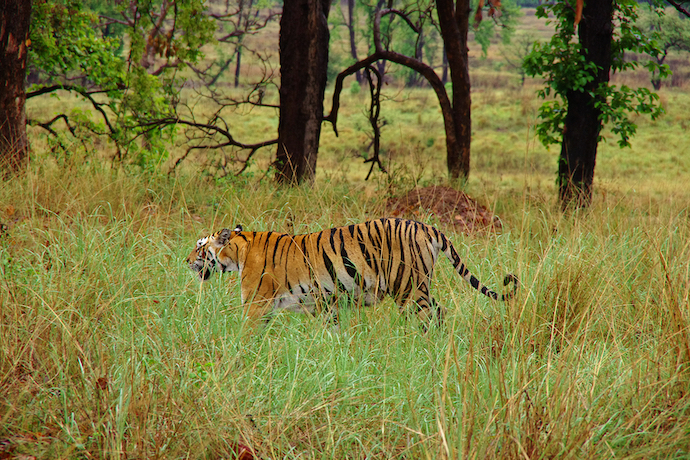
It is well-known that some causes of death are significantly more frightening to most people than others. Plane crashes, for example, are much more talked about than traffic accidents, and most people find the thought of being murdered far more hair-raising and horrifying than the thought of dying from cancer. People in conflict-ridden areas of India constantly fear large predators but are not afraid of mosquitoes. This is not particularly logical since the result – death – is identical. Still, the fear of ending up as helpless prey in the clutches of a large predator is probably deeply ingrained in the human psyche. If in doubt, ask yourself how New Yorkers would react if a wild animal killed just one child in a Manhattan playground.
Mathew has noticed that the number of attacks on humans by large predators in India has increased in recent years. This increase is probably due to a rising human population and growing populations of large wild animals. India has recently overtaken China as the world’s most populous country, with 1.3 billion people. However, the number of wild animals is much more uncertain. Mathew says the official population figures for the large felines are based on photo traps in the country’s national parks.
Moreover, only adult animals count in the statistics. On top of the official tiger population, all the animals that live outside the reserves and those that, for some reason, escape being photographed during a census must be added. In addition, there are still many young animals that are not counted. Complicating matters is the fact that India’s national parks are unfenced, and animals are free to move in and out.
A growing problem
All this is interesting in the context of the growing number of conflicts. For it is outside the national parks – out in the Indian farmland, in the villages, and in the suburbs of the larger cities – that virtually all the accidents occur. And young animals are often involved in these conflicts – in stark contrast to the past when old and weakened animals more often became man-eaters. A common feature of the cases is that an animal that once overcomes its ingrained fear of humans and successfully takes down a human as prey continues this behavior until it is stopped by force. Man-eating cats typically become ‘serial killers.’
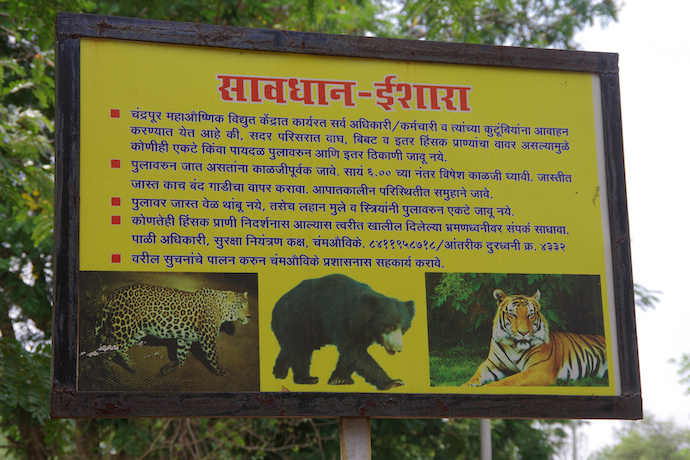
Mathew guesses that the Indian tiger population numbers about twice as many adults as the number living within the national parks. If true, this guess is good news, as the tiger is not nearly as endangered as the official figures suggest. Of course, this is little consolation for those on the feline menu.
“In the case of leopards, the discrepancy between the official population and the actual population is probably much more significant,” Mathew says. “This is because leopards are likelier than tigers to thrive in densely populated areas. The official leopard population figure is around 15,000 leopards. I believe that the actual number is in the region of 100,000 or more.”
Leopards live in dense populations in most Indian cities and adjacent to much of India’s 700,000 villages. The animals are there partly because there is plenty of readily available food for them in the form of feral domestic dogs (of which there are an estimated 60 million in India), monkeys, goats, pigs, and cattle. The densest known leopard population in the world lives in parts of the densely populated city of Mumbai. Few, if any, of these urbanized leopards are included in the official figures.
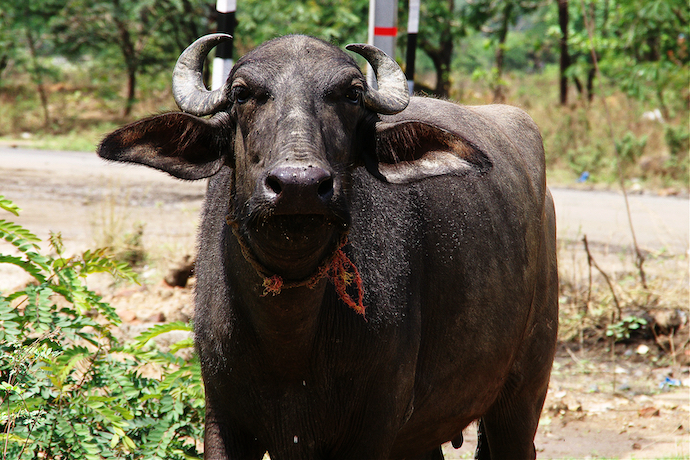
The reasons for the growth of the big cat populations are primarily found in Indian culture, which is strongly influenced by Hinduism. Killing animals is a widespread taboo, and many large wild species, which in the West would be considered ‘iconic,’ play essential roles in the Hindu universe. As a result, poaching has been less prevalent in India than in many other parts of the world. It does occur – just not to the extent that it prevents population growth. As a result, populations in the country’s protected wildlife areas have slowly but surely grown and spread into densely populated areas. India has also enforced a total ban on hunting since 1972. This ban is partly rooted in Hindu beliefs about animals.
It can also be seen as a reaction to the British colonial era when hunting was for the entertainment of colonial representatives and the ruling class in India. However, in light of the growing problems, many forest department officials are now interested in the possibility of using hunting as a tool for future wildlife management. Many find that current management is hampered because authorities cannot kill problem animals quickly and efficiently. Furthermore, the current management scheme costs a lot of money (which could be turned into income for better management practices by hunting).
Three deaths in 15 days
Dheeraj D., a forest ranger, is responsible for the Indian Forest Department’s practical management of conflicts with large wild animals in the coal-mining town of Chandrapur. The city has a population of around a half million people, depending on where you draw the boundary in the red sand. Coal mines, heavy industry, and a huge power plant cut into the city. There are vast industrial areas filled with gas pipelines, water pipes, high-voltage towers, and high fences, all overgrown in the undergrowth of a dense Indian jungle. Sacred cows – and less sacred water buffalo – roam freely in the area, where local shepherds also herd large flocks of goats.
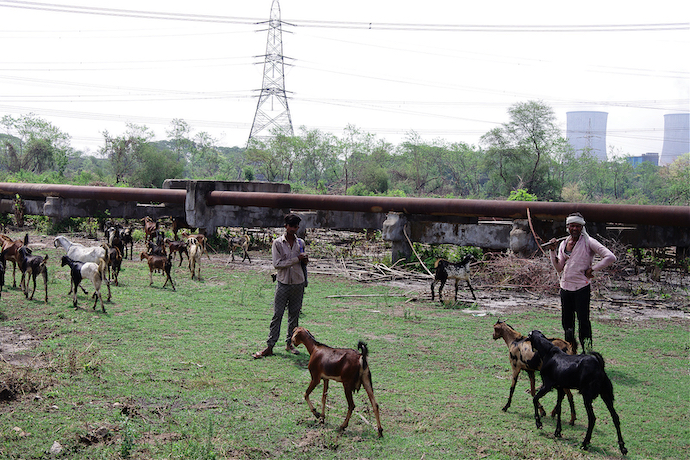
The town is intersected by a river with wide vegetation zones on both sides, acting as a wildlife corridor between two game reserves. Along the roads are signs warning against tigers, leopards, and sloth bears. Last year, more than 50 people in the city were seriously injured or killed due to encounters with large wild predators. That’s just over one in ten thousand inhabitants, and to put that into perspective for the UK, it is the equivalent of Liverpool being the scene of wild animal attacks on 50 people in one year.
Dheeraj gives us a guided tour of some places where attacks have occurred. He tells us about a female leopard that killed an older woman near a residential area last year. Forest department officials followed the procedure and began an attempt to capture the leopard. Still, while that project was underway, the animal moved a few kilometers and, within days, killed another older woman and then a three-year-old child in a village. The angry and frightened villagers locked up some of the forest department employees in the village houses and refused to release them until senior officials and politicians were ready to guarantee a quick solution to the problem. The foresters were released when a shooter was deployed that evening with orders to shoot the leopard in the area. In addition, a green plastic net about five meters high was hastily erected between the village and the open dump from which the leopard had attacked. But the shooter never saw the leopard, and when I was on the site six months after the tragedy, the wind had long since been blowing the plastic net to the ground. Only the gods (there is many of them in India) know what became of that leopard.
Animal love or virtue signaling?
The next day we are visiting a so-called wildlife rescue station near Nagpur. I recognize the pungent smell of captive predators from childhood visits to the zoo. Here, at the Indian Forest Department’s temporary treatment center, a team of veterinarians receives all species of wild Indian animals for treatment of injuries and preparation for release. There are cages and crates with animals everywhere. On this day, in addition to Bengal foxes, owls, turtles, peacocks, and other wild animals, there are five leopards in green-painted steel cages, just big enough for the animals to stand up and turn around. Three leopards have come to the clinic with severe injuries after being attacked by angry Indian villagers with sticks and stones, usually in response to ongoing conflicts. A young female leopard came in with several broken bones; hips knocked out of their hip sockets, and a head injury that left one eye milky white and blind.
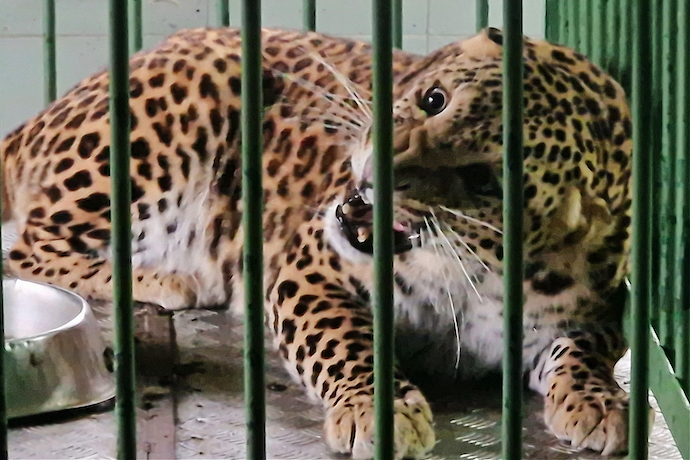
The leopards stare at us from their cages. They snarl and show their teeth. If you make eye contact, they growl loudly, lash out with their front paws and rush toward the bars. One of the vets tells us that 67% of the animals survive their temporary stay at the center before release into the wild after treatment.
A large male leopard sits in a cage in the center’s operating room. It is more aggressive than the others, and during its time in involuntary captivity, it has broken all four canine teeth against the bars. The vets tell us with undisguised pride that the leopard will soon be the first of its kind to have dental implants before release. I ask what the expected survival rate in the wild will be when the tooth-implanted leopard is released after months of habituation to humans in the relatively confined small cage.
I ask the same question about the other wild patients, some of whom spend more than a year at the center. What are the chances of a half-blind leopard, which has also undergone hip surgery, being released into the wild after many months in captivity? Can it continue to contribute positively to the population’s survival, or would the money have been better spent elsewhere? Is it more humane to patch up a badly injured leopard and release it back into the wild than killing it in the first place? I get no answers to these questions. When the leopard reenters the jungle and gets out of sight, it is also out of mind.
Clearly, the center is very much part of the official narrative of animal-friendly India, and they are not used to skeptical questions. In the state of Madhya Pradesh alone, 11 similar rescue centers are in the process of opening.
Lifetime imprisonment for cats
Near the wildlife rescue station, the Nagpur Zoo, India’s largest, has a reception center for captured problem animals. The center is where man-eating tigers and leopards end up if caught alive and not shot.
The issue is a sensitive one. Authorities detain more and more problem cats in small cages in zoos around India. Unfortunately, there is no access to the center where the animals are kept for transfer to zoos. The sole purpose seems to be to avoid killing the wild animals. Apparently, authorities find that lifetime confinement in a small steel cage is a more animal-friendly solution than a rifle bullet when a serial killing wild tiger or leopard must be forced to stop pursuing inappropriate lifestyle choices.
In general, animal rights are taken very seriously. Thus, it is common for these cats to kill several more people after their first kill because the authorities prioritize capturing the cats alive rather than shooting them in a hurry. There are also cases of man-eating cats being released elsewhere in India, with the inevitable risk of the killing spree continuing elsewhere.
Mathen ‘Rajeev’ Mathew is not shy about questioning whether the cultural and religious concern for animal rights that pervades the Hindu country is, to any extent, at the expense of human rights…and especially the rights of poor people.
